What does this mean?
Red pen regime
When I hear any fuss about textspeak—weird punctuation, abbreviations, inventive phrasing and other short cuts that are common to texting— I think about the moral certitude of Mrs. Wilson. She was my 8thgrade English teacher and the type of grammarian who would send a parent’s note back to them with the errors circled in red ink.
Mrs. Wilson taught us the rules of grammar as though they had descended from Mt. Sinai. These were not to be questioned, only obeyed in their immutable state of perfection.
Many hold on to Mrs. Wilson’s view of grammar, not recognizing that these rules are not laws of nature. No, grammar and punctuation are invented technological conventions designed to help us merge speech, writing and printing.
Like any technology, these conventions have a beginning and a history. Mrs. Wilson’s rules have only been with us for a couple hundred years.
Disruption 1.0
About 500 years ago, before the printing press was invented, books were hand-illustrated, rare and extremely expensive. Also, most weren’t written in the vernacular, but in Latin.
Latin, an inflected language, doesn’t use word order to determine sentence structure. Instead, agreement between prefixes and suffixes determine syntax. Even with the words rearranged, each sentence below reads, “Bad is the plan that cannot be changed.”
malum consilium quod mutari non potest
non postest quod mutari consilium malum
quod mutari malum consilium non potest
To make matters even more confusing, up until just before the printing press was invented scribes didn’t use punctuation or even spaces between words. They wrote in a form called scriptio continua.
malumconsiliumquodmutarinonpotest
A page in a book looked like this:
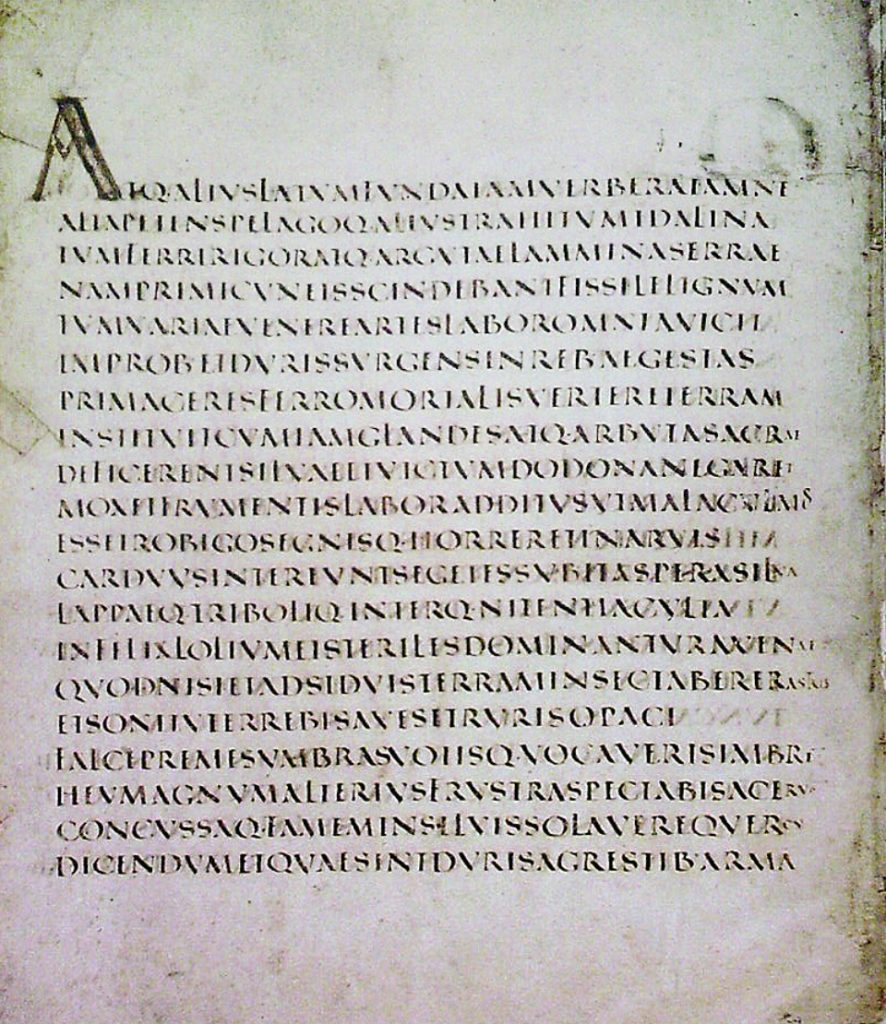
The way people read scriptio continua without punctuation was out loud, allowing the inflections in the language signal all of the separations and meanings.
The point of this little history lesson is that only a few centuries ago most people didn’t read. Those that did, commonly read aloud. And the majority of existing books didn’t have punctuation or space between words. Then everything changed with Johannes Guttenberg’s movable type press. BOOM!

The printing press awoke and transformed forms of writing that had been stagnant for a couple millennia. It facilitated knowledge sharing and built connections between people and cultures. But this didn’t happen immediately.
For the first 200 years of printing, there were no agreed upon rules. Each little town’s printers invented their own way of making books. They made up their own unique spacing and punctuation and also cut and pasted ideas from competing printers. From this process emerged various letter shapes, punctuation marks, spacing, sentences, paragraphs, chapters, etc.
Over time, these divergent methods merged into the standardized grammar rules that were lovingly taught to us by sweet middle-school teachers with red pens.
Most of the grammar and punctuation rules that we think are permanent have only become standardized over the past couple of hundred years. In fact, even standardized rules are in flux.
Fresh and in your face
Today, we are living at an exciting new moment for writing. Computers are freeing words and meanings from the limits of a printed page. New literacies and grammars are being created on the fly. Just like with the first little print shops in Europe, it’s untamed masses (not red pen gatekeepers) who are inventing (un)rules for using OMGs, #s and Emoji.
Digital forms like text messaging, file sharing and streaming are shifting once immovable constraints of time and space, integrating a myriad of media, and empowering new connections across the globe.
This makes this a really cool time for writing geeks. We still have the highly precise and refined Standard English for writing contracts and such. And we have this vibrant, eclectic, inventive, bubbling stew of digital communication that is constantly changing, constantly evolving.
This is a major disruption. Grammars that we viewed as permanent we now see were simply asleep. Computer processors, small screens and user desire are creating something fresh right in front of us.
People are just starting to write about textspeak. Some write from a linguist’s perspective, others with a cultural curiosity. For me communication is the most interesting issue. How are people connecting and making sense of life while using the capabilities of these new platforms?
The following observations just scratch the surface of what’s happening with textspeak.
Short for abbreviation
Two main reasons drive textspeak abbreviations. First, the screen on an SMS text box is small and it scrolls. Every space and character are precious in a small space that must be read in a linear fashion. Second, it’s hip to know what others don’t. Never rule out cool as a driver of change.
Using abbreviations on a small interface is nothing new. Check out the writing on this coin for the Emperor Trajan:
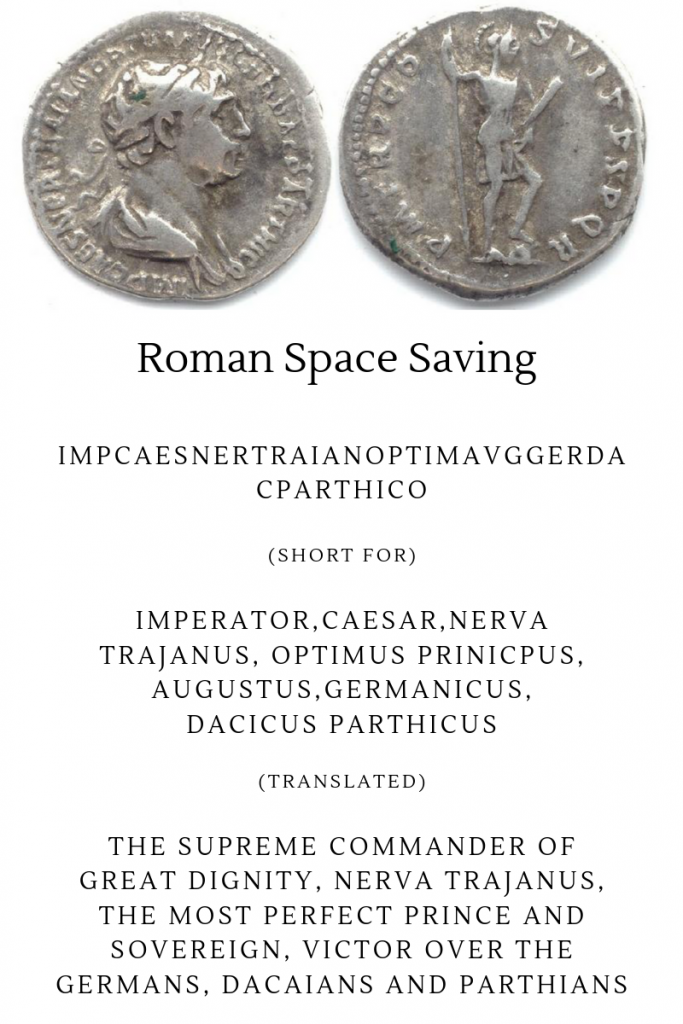
Those Romans could pack a lot pomp onto one side of a coin. Two thousand years later, nothing much has changed for our folks in Washington.

In textspeak, abbreviations and acronyms often signal idioms and colloquialisms, not literal meanings. Where IRS is short for a scary government agency, people writing lol usually aren’t laughing. Sarcasm, irony and slang underscore a lot of textspeak.
This is where the hip factor comes into play. If you don’t have the 411 on how to KPC then H-MDY…H_FDAY you’re old, slow and uncool. As with any slang, textspeak is a moving target. Try and keep up.
Here is a list common textspeak abbreviations.
Blocking and Spacing
There’s a maxim in real estate investing—highest and best use—that says a structure needs to elevate the value of the land. In a text message the screen is like an empty lot in San Francisco. You want to be careful to build the right house on it.
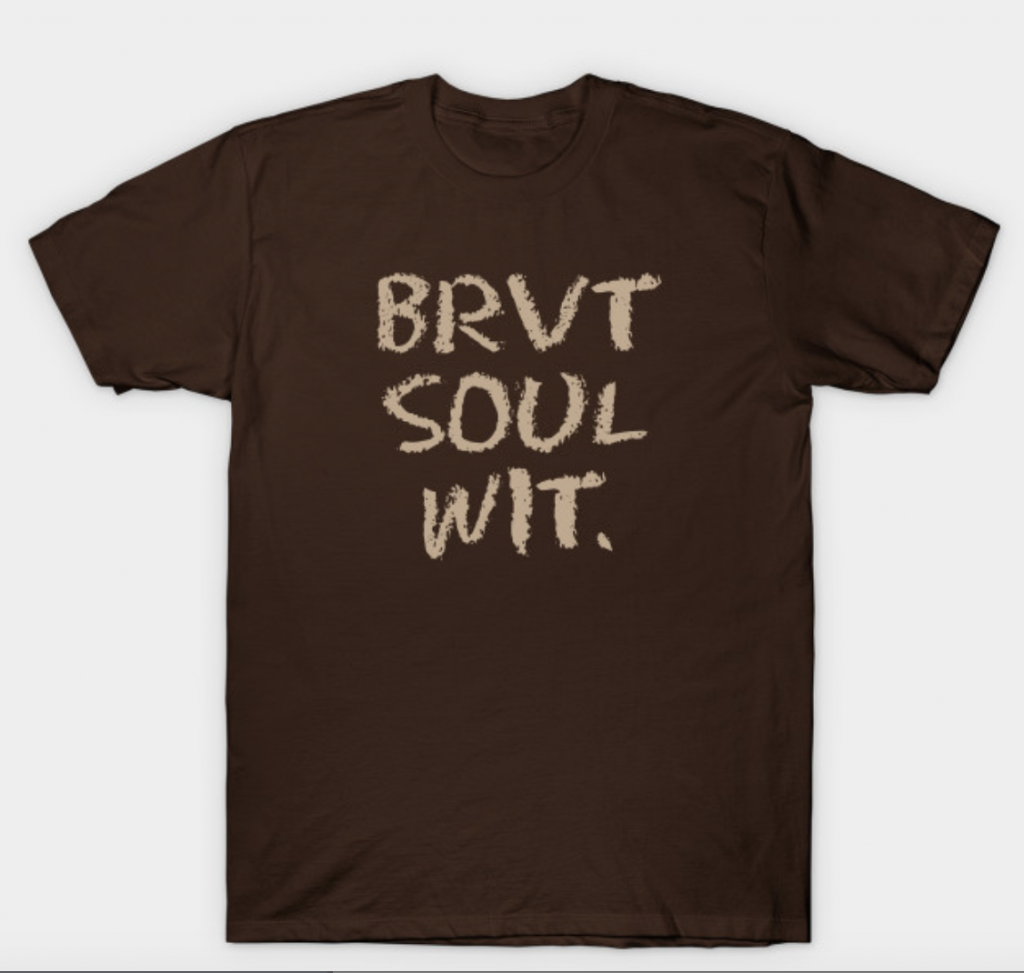
Long scrolling texts are very difficult to read because, unlike a full-size page, one’s eye cannot scan back up through the document to connect points and references. Both the writer and the reader can easily get lost.
They’re also unfriendly. Imagine a conversation where one of the parties just kept talking and talking while the other party was reduced to simply nodding. Many good conversational on and off ramps are bulldozed in a long text. Maybe, send an email instead.
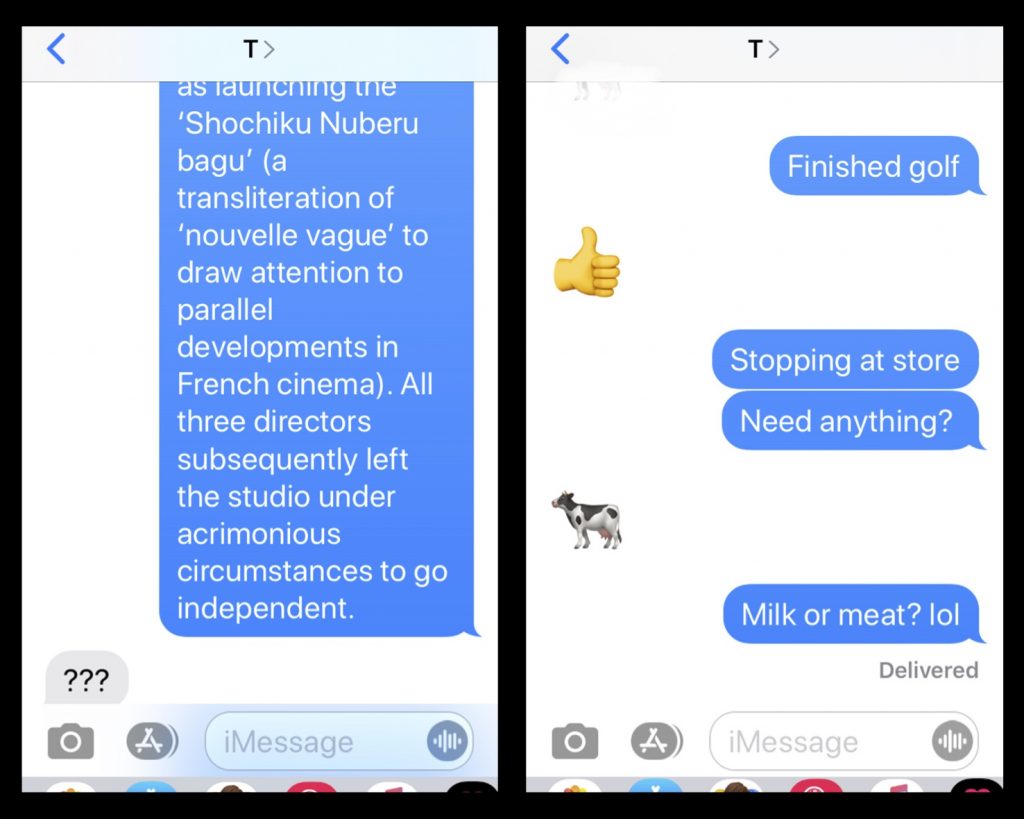
Blocking and spacing is a textspeak alternative to punctuation that helps us stop/pause/resume. It also enables the writer to separate and emphasize important points in the conversation.
Remembering that texting more closely approximates talking than it does formal writing, blocks and spaces also make room for the reader to jump in with a comment, rebuttal or (more typically) a random non sequitur.
ALL CAPS
ALL CAPS are everywhere in advertising and print media. They are meant to stand out and grab our attention. However well they’ve worked for marketers, they don’t have a great reputation in interpersonal correspondence.
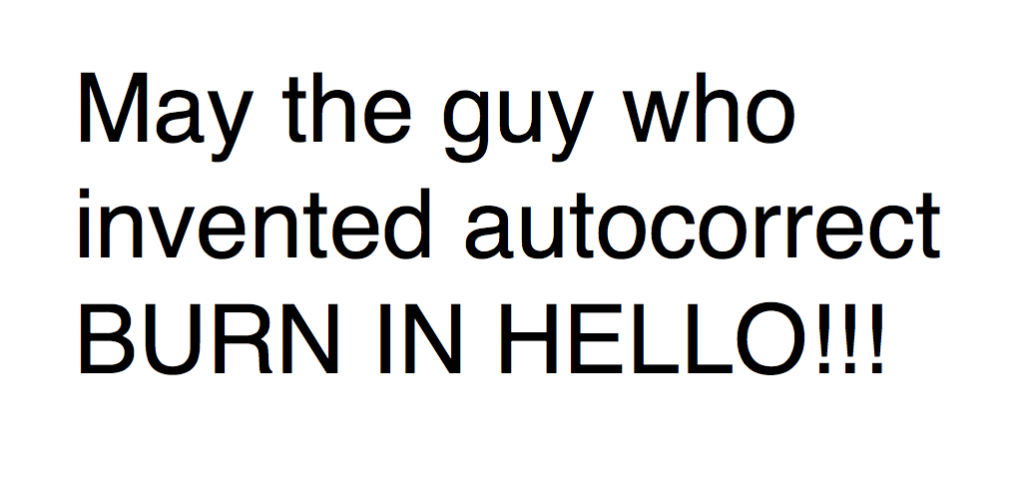
Most of us have either sent or received an angry email. So, we understand that ALL CAPS MEANS SHOUTING!!! But we don’t only shout when were mad. Sometimes we shout when we’re excited or happy, or even ironic:
- To exclaim: CONGRATS
- To emphasize: We will be heading to Atlanta NEXT WEEKEND
- To be ironic: I’m so CHILL
- To show how out of touch we are: LOL is so 2008…lol
Punctuation optional? (not exactly)
As I mentioned in my last article, the punctuation issue is getting on peoples’ last nerve. Old school writers are baffled by its chaotic absence and digital natives are thrilled to see it go and change. Here are a few of the ways punctuation is different in textspeak:
- The period signals passive-aggressiveness.
- An asterisk signals *emphasis*, like little sparkles.
- The ~humble~ tilde is sarcastic.
- A semicolon says show off.
- An apostrophe signals anal retentiveness.
- A single question mark begs a response. Three or more says W@ dude???
For more on evolving punctuation, check this out.
Sprinkles on Top
Smartphones let us drop wonderful sprinkles on top of our textspeak. We can add music, photos, emoticon, emoji, gifs, video, and more. Linking media is one of my favorite aspects of digital communication. It reminds me of being a kid and discovering a great new band. Half the joy was sharing the music with my friends.
Over the next few articles we’ll take a closer look at the sprinkles that color our Internet conversations.
